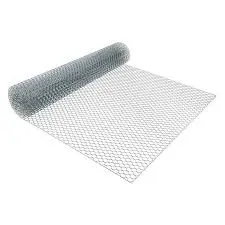-
+86 15030157877
-
sales@galvanizedmetalmesh.com
Nov . 14, 2024 07:56 Back to list
wire fence factories
The Wire Fence Industry A Comprehensive Overview
Wire fencing plays a crucial role in various sectors, from agriculture to security. As one of the most common types of fencing utilized worldwide, wire fences are valued for their durability, affordability, and versatility. In this article, we will explore the wire fence factories, their significance in the industry, production processes, and the trends shaping their future.
The Role of Wire Fence Factories
Wire fence factories are vital in producing a diverse range of fencing solutions suitable for numerous applications. These facilities manufacture various types of wire fencing, including barbed wire, chain-link fences, welded wire, and field fencing. Each type has its unique properties designed for specific uses, such as agricultural land, commercial properties, and residential areas.
The factories often cater to different markets, including farmers requiring livestock containment, construction companies needing secure perimeters, and homeowners wanting to enhance privacy and security. Their ability to deliver tailored products according to customer specifications is a key competitive advantage for many of these factories.
Production Processes in Wire Fence Manufacturing
The production of wire fencing involves several critical steps. The raw materials, primarily steel wire, are first selected based on the desired strength and durability of the finished product. These wires are then processed through various stages
1. Wire Drawing Initially, large rolls of wire rod are drawn through a series of dies to create thinner strands. This stage is crucial as it determines the gauge and tensile strength of the wire.
2. Coating To increase longevity, especially in outdoor environments, the wire is often galvanized or coated with PVC. Galvanization involves coating the wire with zinc to prevent rust, while PVC coating adds an extra layer of protection and can come in various colors for aesthetic purposes.
wire fence factories

3. Fabrication After coating, the wire is bent, twisted, and cut to create the desired fence type. For instance, barbed wire is produced by twisting strands together and adding barbs at intervals for security. Chain-link fencing involves weaving wires together to form a mesh.
4. Quality Control Factories implement rigorous quality control measures to ensure that the products meet industry standards. Each batch of fencing material is tested for strength, durability, and resistance to weather conditions.
5. Packaging and Distribution Once produced, the fences are packaged and prepared for distribution. Factories often work with a network of distributors and retailers to reach various markets effectively.
The Market Trends Affecting Wire Fence Factories
In recent years, the wire fence industry has experienced notable trends that are reshaping its landscape. One significant trend is the increased emphasis on sustainability. Many manufacturers are now focusing on eco-friendly materials and production practices. The growing awareness of environmental issues has led to innovations in using recycled materials in wire production.
Moreover, technological advancements have revolutionized manufacturing processes. The adoption of automated machinery in wire fence factories has improved efficiency and reduced labor costs. Automated processes ensure precision and consistency, enabling factories to meet the growing demand for customized fencing solutions.
Additionally, the rise of e-commerce has altered the way wire fence products are marketed and sold. Many factories have established online platforms, allowing customers to order directly, increasing accessibility and convenience. This shift is particularly beneficial for agricultural and rural customers who may not have easy access to physical retail outlets.
Conclusion
Wire fence factories are fundamental to providing a wide range of fencing solutions that cater to various applications. Their manufacturing processes, from wire drawing to quality control, ensure that products are durable and meet market demands. The industry is evolving, driven by sustainability, technological advancements, and changing consumer purchasing behaviors. As the need for reliable, cost-effective fencing solutions continues to grow globally, wire fence factories will remain a cornerstone of the construction and agricultural industries, adapting to new challenges and opportunities in the future.
-
Welded Gabion Solutions: Durable & AI-Enhanced Designs
NewsAug.01,2025
-
Premium Welded Gabion Mesh | Robust & Eco-Friendly
NewsJul.31,2025
-
Premium Eco-Friendly Roof Tiles | Affordable & Durable
NewsJul.31,2025
-
Premium Roof Tiles for Durable & Stylish Roofing Solutions
NewsJul.30,2025
-
High-Quality Roof Tiles for Durable & Stylish Roofing Solutions
NewsJul.29,2025
-
High Quality Square Wire Mesh Manufacturer & Supplier for Wholesale
NewsJul.29,2025



